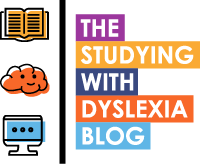The British Dyslexia Association have written the following which can be found on their website here;
The information contained on this page is specific aimed at primary school aged children
1. General.
2. Written Work.
3. Reading.
4. Numeracy.
5. Time.
6. Skills.
7. Behaviour.
8. Practical Aids
2. Written Work.
3. Reading.
4. Numeracy.
5. Time.
6. Skills.
7. Behaviour.
8. Practical Aids
We have all come across the situation. A child who is struggling with spelling, writing or reading, or perhaps numeracy. A child who does not progress as quickly as his/her classmates – or worse, does not seem to progress at all. And yet there are obvious inconsistencies; the child clearly has areas of ability as well as weaknesses.
You think the child will improve in time – but you see no change. Then someone mentions dyslexia and you start to wonder. But you tell yourself that children often get over such early difficulties and you hope for the best. Yet you still feel uneasy. This child is different.
So how do you tell if a child may be dyslexic? There are some obvious signs, if you know what to look for. But not all children have the same cluster of abilities or difficulties.
Look out for the following areas of weaknesses which will appear alongside abilities, which may be in areas of creativity or in highly developed verbal skills:
1. General.
- speed of processing: spoken and/or written language slow;
- poor concentration;
- has difficulty following instructions;
- forgetful of words.
2. Written Work.
- has a poor standard of written work compared with oral ability
- produces messy work with many crossings out and words tried several times, eg wippe, wype, wiep, wipe;
- is persistently confused by letters which look similar, particularly b/d, p/g, p/q, n/u, m/w;
- has poor handwriting with many ‘reversals’ and badly formed letters;
- spells a word several different ways in one piece of writing;
- makes anagrams of words, eg tired for tried, breaded for bearded;
- produces badly set-out written work, doesn’t stay close to the margin
- has poor pencil grip;
- produces phonetic and bizarre spelling: not age/ability appropriate;
- uses unusual sequencing of letters or words.
3. Reading.
- makes poor reading progress, especially using look and say methods;
- finds its difficulty to blend letters together;
- has difficulty in establishing syllable division or knowing the beginnings and endings of words;
- pronunciation of words unusual;
- no expression in reading comprehension poor;
- is hesitant and laboured in reading, especially when reading aloud;
- misses out words when reading, or adds extra words;
- fails to recognise familiar words;
- loses the point of a story being read or written;
- has difficulty in picking out the most important points from a passage.
4. Numeracy.
- shows confusion with number order, eg units, tens, hundreds;
- is confused by symbols such as + and x signs;
- has difficulty remembering anything in a sequential order, eg tables, days of the week, the alphabet.
5. Time.
- has difficulty in learning to tell the time;
- shows poor time keeping and general awareness;
- has poor personal organisation;
- has difficulty remembering what day of the week it is, their birth date, seasons of the year, months of the year;
- difficulty with concepts – yesterday, today, tomorrow.
6. Skills.
- has poor motor skills, leading to weaknesses in speed, control and accuracy of the pencil;
- has a limited understanding of non verbal communication;
- is confused by the difference between left and right, up and down, east and west;
- has indeterminate hand preference;
- performs unevenly from day to day.
7. Behaviour.
- employs work avoidance tactics, such as sharpening pencils and looking for books;
- seems to ‘dream’, does not seem to listen;
- is easily distracted;
- is the class clown or is disruptive or withdrawn (these are often cries for help);
- is excessively tired due to amount of concentration and effort required.
A child who has a cluster of these difficulties together with some abilities may be dyslexic.
Your next step should be to consult the school’s SENCo immediately and to decide whether the parents should be informed and the child given appropriate help.
- Whiteboards and whiteboard markers
- Highlighters
- Post-it Notes
- Pastel coloured paper/exercise books
- Coloured overlays and reading rulers
- Wooden letters: upper and lower case.
---------------------------------------------------------------------------------------------
Thanks to the British Dyslexia Association for the above information.

